Cumans – Fierce Warriors of the Steppe
Cumans
The Eurasian steppe gave rise to innumerable tribes of warlike nomads, who would leave their mark through their interactions with their neighbors. The Cumans were no exception. They partook in the politics of several influential early medieval kingdoms including:
- Kingdom of Hungary
- Kievan Rus’
- Khwarezm Empire
- Second Bulgarian Empire
- Kingdom of Serbia
- Moldavia
- Wallachia
- Kingdom of Georgia
- Byzantine Empire
- Golden Horde Khanate
- Pechenegs
- Mongol Empire
This article explores the fierce and mysterious world of the Cumans. Who were they? Where did they come from? What was their culture like? What religious beliefs did they hold? In this article, we will address these questions and more.
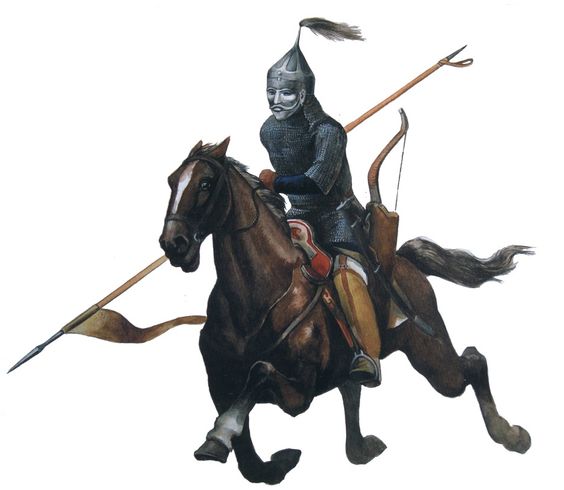
Who Were the Cumans?
The Cumans were a nomadic Turkic confederation of tribes. The Cumans are known by many names, one of the more common ones being the Cuman-Kipchaks. It is unknown whether the Kipchaks were conquered by the Cumans or if they merged over time through voluntary interactions. Either way, the Cumans were never able to fully unite under centralized leadership and remained a loose confederation of tribes. They held dominion over a large area from the borders of Hungary on the eastern fringes of the Danube, to modern-day Kazakhistan on the borders of China.

They were in fact the dominant military power in this area up until the early 1200s when the Mongols made their way westward. Their lifestyle, culture, religion, and military tactics were all typical of nomadic civilizations on the Eurasian steppe since time immemorial. Their main economic activities were husbandry, herding, hunting, and war. As all warlike horse lords had done in the past, they derived a large portion of their wealth from extortion, as well as the capturing and trading of slaves.
Name Origins
The origins of the name for these people, the Cuman-Kipchaks is shrouded in mystery just like the origins of the people themselves. There are however some clues in the linguistics of their neighbors and in the Turkic language. Within the family of Turkic languages, qun, qūn, and quman mean “sallow, cream-colored” and “pale yellow”. The Eastern Slavic name for the Cuman-Kipchaks is Polovtsy which means “pale, yellow or blonde”. Indeed many Cumans, especially the nobility, were known to be blonde and blue-eyed. The study of mitochondria DNA (genes from maternal lineage) of several Cuman burials shows them to have an overwhelming number of western Eurasian markers. This could be easily addressed by the fact that women of conquered and/or raided areas in eastern Europe were known to be carried off by the Cumans and made to marry into the marauder’s families.

Where did the Cumans Come From?
The Cumans, like nearly all nomadic horse lords, originated on the great grasslands of Eurasia. Migrations from this area usually occurred in a western or southern direction. Political upheaval, turmoil, and pressure from the far east drove many nomads from the harsh eastern steppes to more favorable climatic and political conditions in the south-west.
Proto-Mongolian tribes known as the Khitan overthrew the Tang Dynasty (618 to 907) and founded the Liao Dynasty (916–1125). Unlike the Tang, Liao made a concerted effort to make their presence known and felt on the steppe to their west. This caused several waves of migrations, like a domino effect, pushing groups of people into each other as they were pressed ever westwards.
The Liao were eventually toppled by the Jin Dynasty which prompted several Khitan factions, led by Yelü Dashi (Emperor Dezong of Liao) to establish the Qara-Khitai in the area of modern-day Kazakistan.

Orkhon inscriptions
The Orkhon inscriptions are a set of memorial installations erected in the early 700’s in the area of the Orkhon Valley in Mongolia. The monuments were erected by another Turkic group known as the Göktürks and are written in the Old Turkic alphabet. The writing on these stone monuments is the oldest surviving example of a Turkic language. This monument is where the Cuman-Kipchaks are first mentioned as members of the Göktürk Khaganate.
After the collapse of Göktürk rule in the east, the Cumans are known to have moved further west. Here they became prominent members of another confederacy known as the Kimek–Kipchak confederation. This area, which today encompasses the nation of Kazakistan. would remain their base of operations until the Mongol invasions of the early 1200s.
What did Cumans Look Like?
Being a loose confederation of tribes, stretching over thousands of miles, the Cumans may have possessed great genetic variation. As the tribes moved westward over many centuries, their genetic makeup was surely intermingled with the populations they encountered. Political marriages between noble houses of Europe and the Cuman elite were well known and documented.
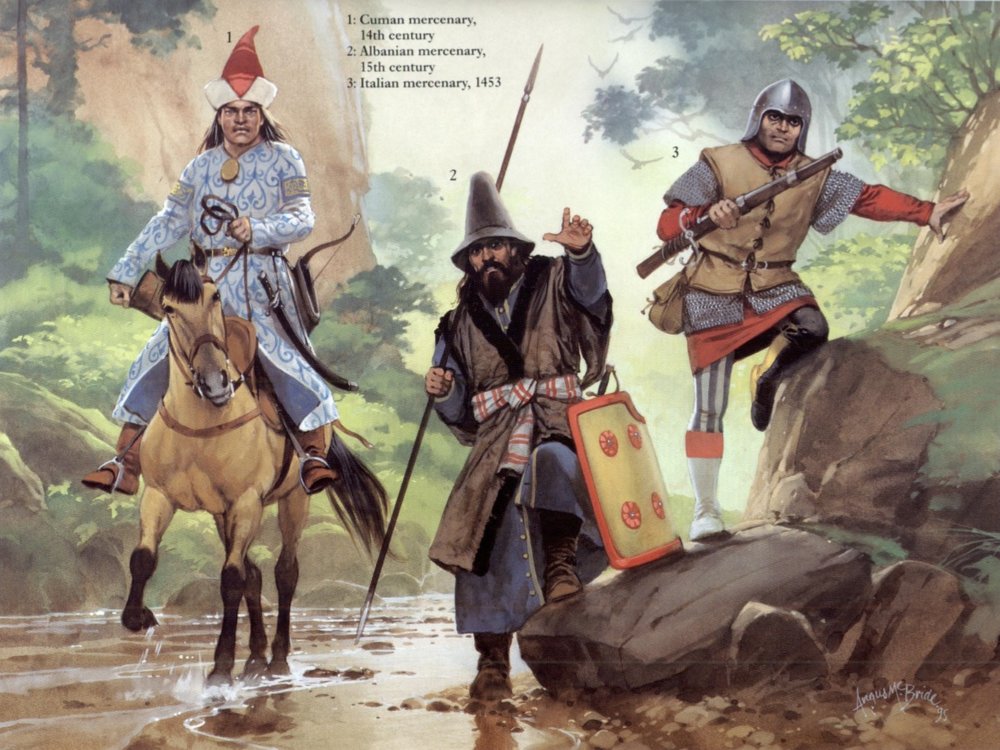
Many sources as well as the origins of their name, all indicate that many Cumans were blonde-haired and blue-eyed. Fortunately for us, new technology and means of research are available through genetic sequencing (DNA mapping). A series of genetic sequencing was conducted on material recovered from Cuman burials in Hungary. For the full academic article please explore further here. The mitochondrial DNA (mDNA, traces the maternal line) reveals a mixture of genes from both western Europe as well as Asian markers.
There is another clue that could perhaps give us a glimpse of what a Cuman, particularly a Cuman-Kipchak warrior could have looked like. This clue comes to us from their armor. Specifically their war-masks. The Cuman warrior elite was known to manufacture and wear iron masks, shaped and formed in the likeness of a human face. These faces look more Indo-European or Turkish than Asiatic to me. Take a look for yourself.
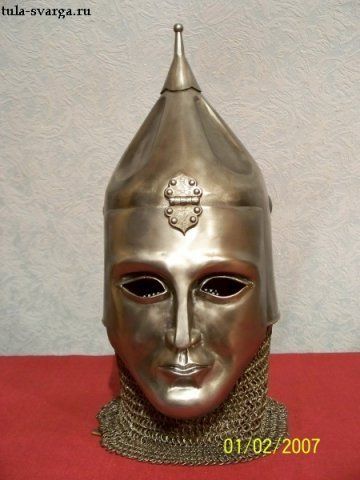
Cuman Military Strategy
The Cumans, like all other nomadic steppe armies, were mainly light cavalry archers. They would later adopt heavy cavalry, but for the most part, they fought with light armor. Speed, maneuverability and long-ranged weaponry were their strength. Their main weapon was the Asiatic composite bow, which they used to wear down their opponents from a distance.

Common arms and armor attributed to the Cumans incudes:
- Asiatic recurve bow. Similar to Hun and Mongol bow (pre-16th century)
- curved sword (saber)
- small and heavy spears
- relatively small circular or tear-drop shaped shields
- mace
- daggers
- javelins
- short-sleeved mail shirt
- lamellar (iron or leather)
- round or conical helmets with anthropomorphic face masks (gold or silver for princes)
A Byzantine government official and historian by the name of Niketas Choniates describes the Battle of Beroia.
“They [The Cumans] fought in their habitual manner, learned from their fathers. They would attack, shoot their arrows, and begin to fight with spears. Before long they would turn their attack into flight and induce their enemy to pursue them. Then they would show their faces instead of their backs, like birds cutting through the air, and would fight face to face with their assailants and struggle even more bravely. This they would do several times, and when they gained the upper hand over the Romans [Byzantines], they would stop turning back again. Then they would draw their swords, release an appalling roar, and fall upon the Romans quicker than thought. They would seize and massacre those who fought bravely and those who behaved cowardly alike.” [Vásáry, István (2005). Cumans and Tatars Oriental Military in the Pre-Ottoman Balkans 1185–1365. Cambridge University Press. ISBN 978-0-5218-3756-9.]
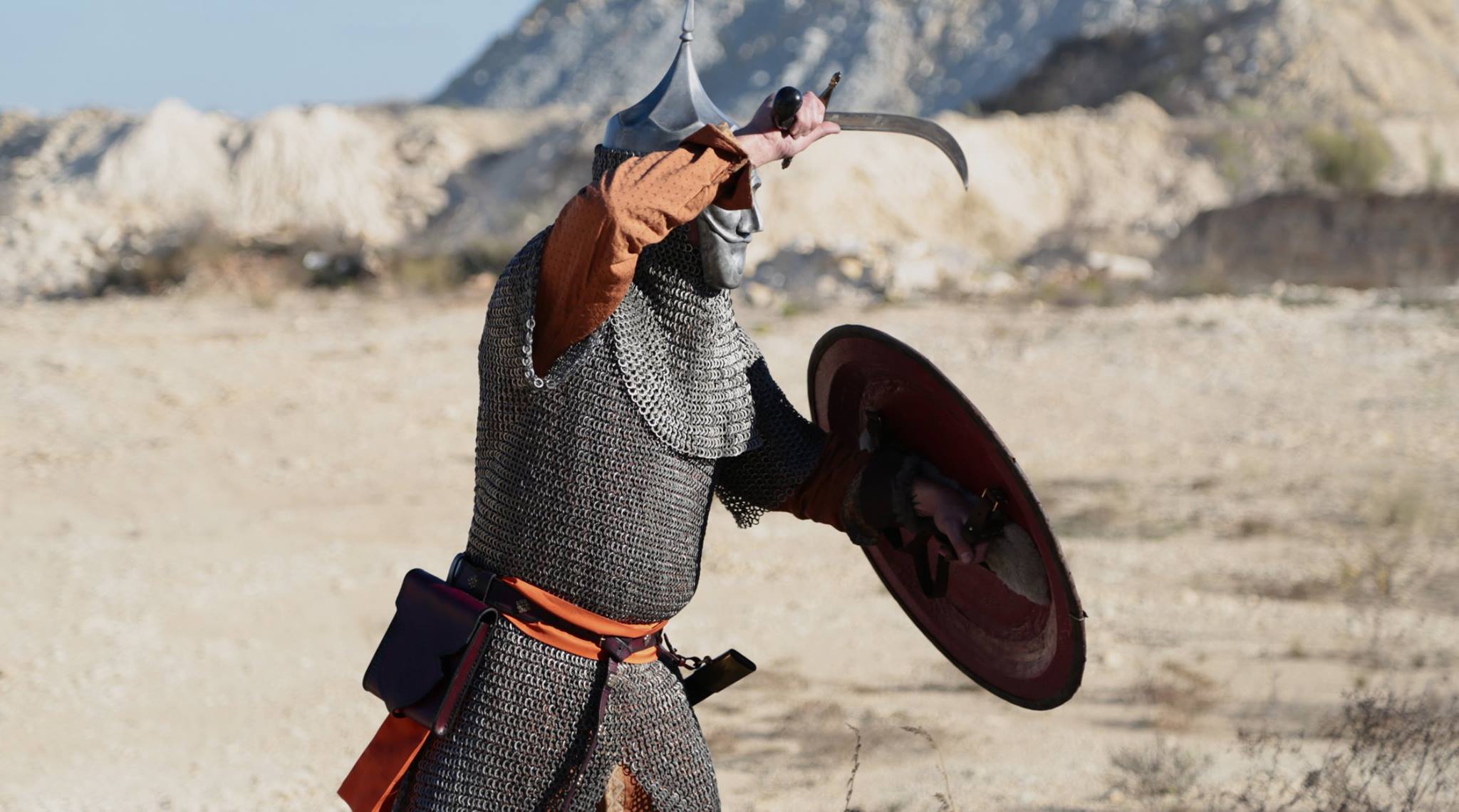
The Cumans like other steppe armies were known to travel great distances with exceptional speed. They had special feeding sacks attached to the headgear of the horse allowing it to conveniently feed whenever it needed. This allowed the Cumans to travel continuously for days on end, usually surprising their victims before conducting abrupt and savage raids. The Cumans were known to keep several (sometimes up to 10-12) horses which they would alternate. This kept the horses fresh and allowed them to maintain an intensity of mounted warfare that many western European nations could not match.
Cumans Vs Mongols
Mongol armies crossed the Caucuses mountains in 1220 in hot pursuit of Muhammed II, the shah of the Khwarezmid Empire. The shah was in big trouble with Ghenghis as the Khan had sent envoys to the shah, which he had killed. This greatly upset Ghenghis and Muhammed had been marked for death.
The Mongols under the generalship of Jebe and Subutai were in charge of the European incursion. They were two of the Khan’s most accomplished generals, they were battle-hardened, and considered by many to be military geniuses. Many Eastern European states put up fierce resistance, but all eventually succumbed to the Mongols.
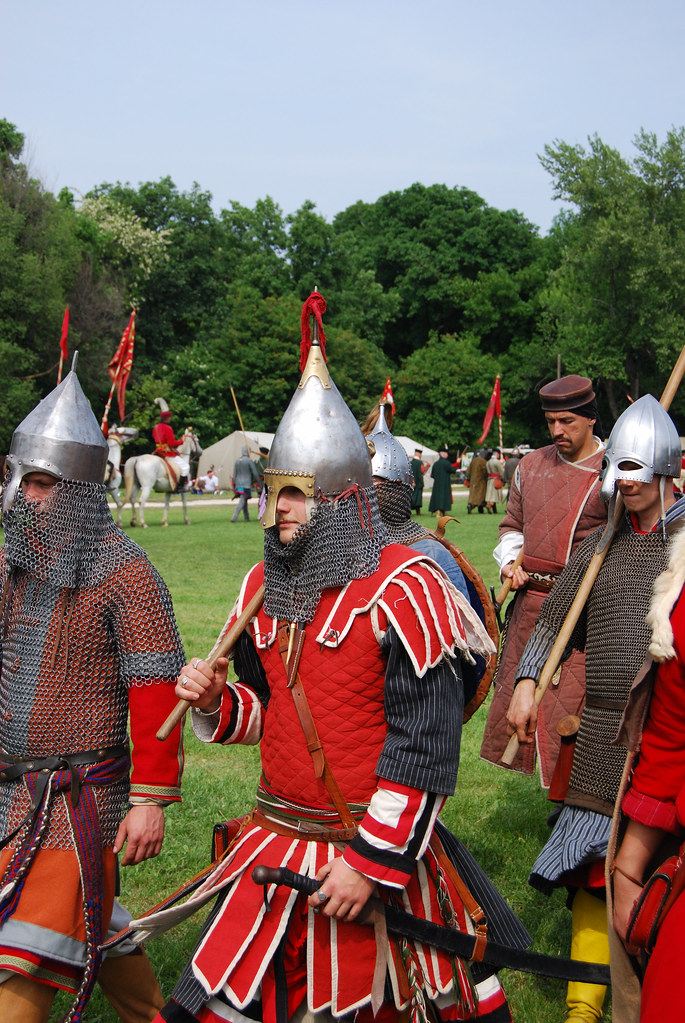
The Cumans, seeing what was coming, sought the aid of several Rus’ princes but were generally ignored. When the Mongols finally did appear on the borders of the Russian principalities, the mood changed and an alliance was forged between the Cumans and the Rus’. The new allies decided to move east, to destroy any Mongol forces they came into contact with.
After several days of march, a Mongol envoy tried to persuade the Cumans and their allies not to fight but the messages were ignored. The Cuman and Rus’ forces then began to pursue a small contingent of Mongols further east. Little did they know that this contingent was leading them into an ambush.
Cumans Dispersed
The Cuman and Rus forces were crushed, however, the Cumans did manage to escape. A few years later a decisive blow was dealt with greater Cumania in 1238-39. After this time a great migration of Cuman-Kipchak people occurred. Some people remained and were absorbed by the Mongols, later becoming the Golden Horde (Kipchak Khanate). Large numbers of Cumans were also absorbed into the Kingdom of Hungary, Byzantine, and Bulgarian Empires. Cumans were also sold as slaves and became Mamluks in Egypt. Some became high-ranking officials and even Sultans. The Mamluks would go on to fight and defeat Mongol armies in the future.
Cumans in Hungary
It was King Béla IV of Hungary who gave refuge to the Cumans fleeing the wreckage of their homes in the east. It is safe to assume that Béla expected the Mongols to come knocking on his door in the near future as well and was looking for experienced allies that could help fight them. The Cuman leader Khan Köten had pledged his allegiance to the Hungarian king and would convert to Christianity. In return for Hungary’s protection as well as portions of land, the Cumans would help out in military affairs. Things did not work out so well though, for either the Cumans or the Hungarians.
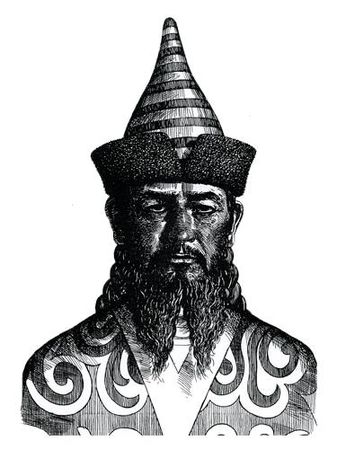
The greedy Hungarian nobility was very sensitive to even the slightest possible disruptions to the current power dynamic. They did not trust the Cumans, and Béla’s decision to offer refuge was looked on by many of the nobles with great suspicion. Béla needed a strong and unified Hungary, with the full support of the nobles, in order to give them the best chances of repelling the approaching Mongols. In a move to pacify the nobility, the Hungarian king had Köten, the Cuman leader, placed under house arrest. Unfortunately, this only further aroused suspicions from the nobles, as well as alienated and angered the Cumans. Nice one Béla.
Devastation in Hungary
Defenses along the Carpathian mountain passes were attacked and leveled by the advancing Mongols in 1240. The situation looked dire for Hungary. But if you thought things couldn’t get any worse you are a person who would be put into the category known as “wrong”. The nobility had Köten killed in 1241 which caused the Cumans to go rampaging through Hungary toward the Balkans and the Second Bulgarian Empire.
With the departure of the Cumans, one of the very few groups with the experience and willingness to fight the Mongols, Hungary was extremely vulnerable. The Mongols devasted many regions. King Béla pleaded with the Cumans to return and settle in the Great Plains regions of Hungary in exchange for military service. Many returned to settle and establish themselves in the Plains regions of Hungary. Two relatively autonomous regions developed from these settlements known as Greater Cumania (Nagykunság) and Little Cumania (Kiskunság).
Cuman Integration into Hungary
Over the years many rights and privileges were granted to the Cuman subjects of Hungary. Cuman influence was strong in these regions, and in Hungary as a whole during the 13th century A.D. In 1270 a powerful Cuman chieftain’s daughter, through political marriage became Queen of Hungary. Her son, Ladislaus IV of Hungary (Kun Laszlo) would become the future king of Hungary from 1272-1290. He was known as Ladislaus the Cuman and was keen on adopting his ancestral culture and dress. He lived and associated mostly with his Cuman entourage and concubines.
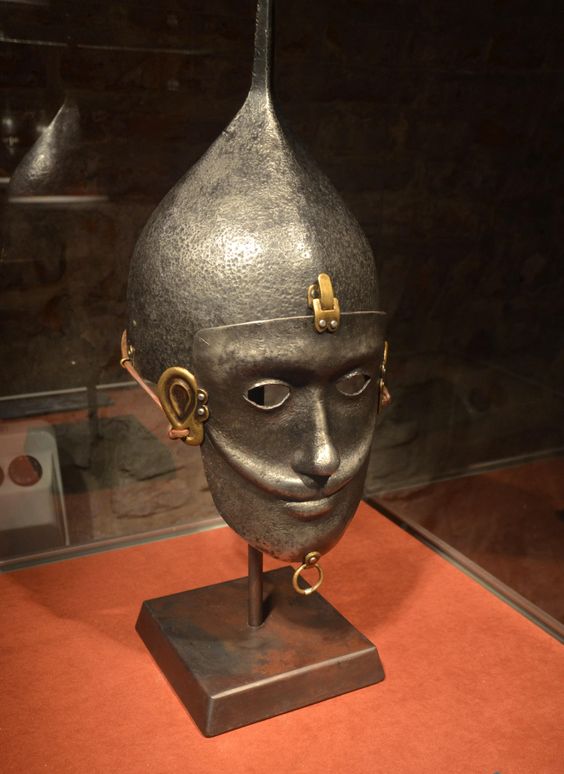
Cuman Mask
One of the most iconic and recognizable traits of a Cuman warrior is their war masks. These were typically made of iron, though some have been known to be made of precious metals and even leather. The main feature of the mask was a pronounced mustache that typically stretched across the entire width of the mask. Most had a hinge on the top of the mask where the “forehead” area connected to the helmet above. This was likely for the mask to be raised from time to time. The masks are all very similar, although some are much more elaborate with intricate etchings.
Masks of the Cuman variety were found all over Eastern Europe. Most individuals buried with masks were also buried with other fine armor, full mail jackets, horse armor, as well as finely crafted sabers. These lead archeologists and historians to assume that it was typically wealthy, high ranking warriors and officials that could afford to wear such armor.
Similar masks are known to have been worn by the Persian and Mongolian elite. Mongolian shamans may wear masks to conceal their identity when going into trance. The Cumans themselves were shamanistic and the masks may have had a special psycho-spiritual significance.

Cuman Language
Cumans spoke an early form of Turkic that does not survive today. A manuscript, known as the Codex Cumanicus began to be written over a period of several centuries, beginning in the 1100s. As the Cumans began to interact more and more with western European nations, interest in communicating with the Cumans grew. This was especially true among the merchant class, as well as missionaries who sought to convert the pagans to Christianity.
The Codex contains a dictionary in Latin, Persian, and Cuman, written in the Latin alphabet. The work also contains a German-Cuman dictionary, notes on Cuman grammar, as well as Cumanic poems.
The work survives to this day and is currently housed in the Library of St. Mark, in Venice.
Cuman Religion
Like all steppe dwellers, Cuman religious practice revolved around the shaman. Shamanism, as well as animism (worship of and belief in spirits residing in all aspects of nature), was practiced amongst the various tribes of the steppe lands for millennia. The totem animal of the Cumans was the wolf and dog. They swore oaths and sacrificed dogs by cutting them in half. The oath makers would have to suffer death if their oaths were not fulfilled.
The Cumans also erected stone statues of their notable ancestors. Most face east and are usually depicted holding a cup. They wear full battle gear, mail shirts, helmets, etc.
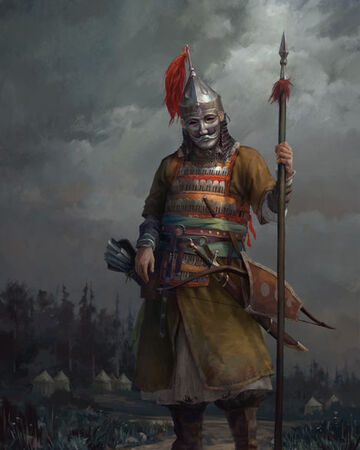
What Happened to the Cumans?
The Cumans, though strong militarily, with extremely skilled individual warriors, never unified as one nation under a strong leader. Over time they had dispersed over a very wide area and were gradually assimilated into the various factions they interacted with. Some had absorbed into Hungary and the Balkans. Others had been absorbed by the Mongols and remained on the steppe as the Golden Horde. Some even became Mamluks, gaining power and influence in Egypt other areas of the Middle East. The Cumans were fascinating, mysterious, and awesome people. It was a great pleasure in exploring their history.
More on the Cumans!
A very good summary of Cuman history in video format:
Cumans AOE2
In case you didn’t know (although you should) AOE2 stands for Age of Empires 2. A real-time strategy computer game developed by Ensemble Studios and published by Microsoft (whattup Bill). The original Age of Empires II (2) was released in 1999 and the rest is history. It is still played to this day over 20 years later by many including the author of this article.
![]()
The premise of the game is simple enough, especially if you are familiar with real-time strategy games. What set AOE apart was the masterful integration of geography and history into the game. You can play as several empires or groups of people throughout history, including:
The game has had several expansion packs and upgrades and on November 14, 2019, AOE2: Definitive Edition was released with four new races to play as, and one was indeed the Cumans! Oh my, what exciting times!
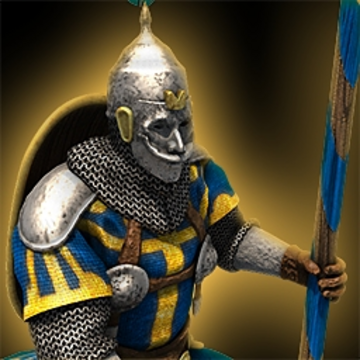
They are a cavalry civilization which is appropriate, and their unique unit is the Kipchak which is among the very best cavalry archers in the game. The cavalry can also move 5%/10%/15% faster in the Feudal/Castle/Imperial Age respectively, which reflects well onto their historical, fast-moving nomadic customs and way of life. Their unique technology is “Steppe Husbandry” which allows some of their cavalry units to be built twice as fast.
Thank you for stopping by! Check out more articles HERE!
![]()